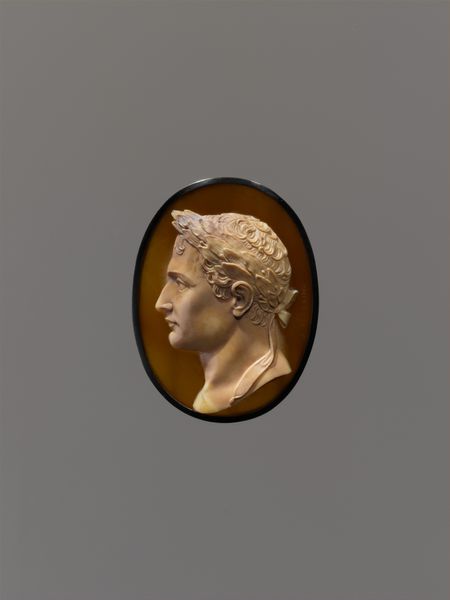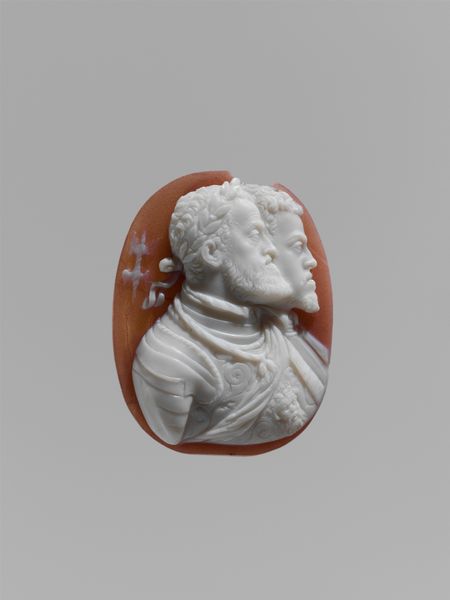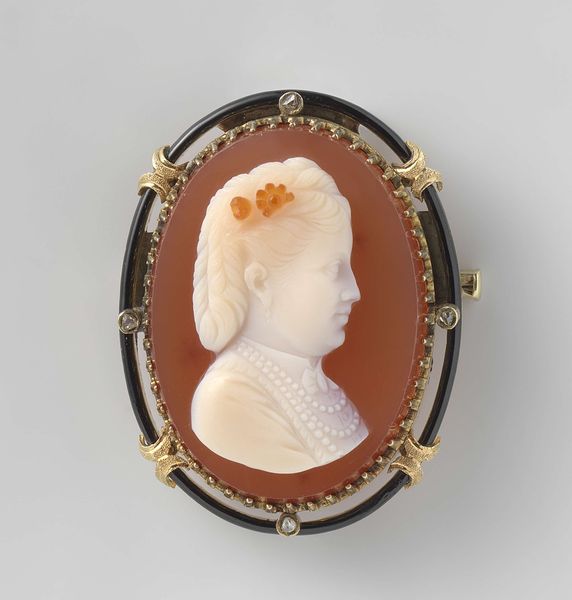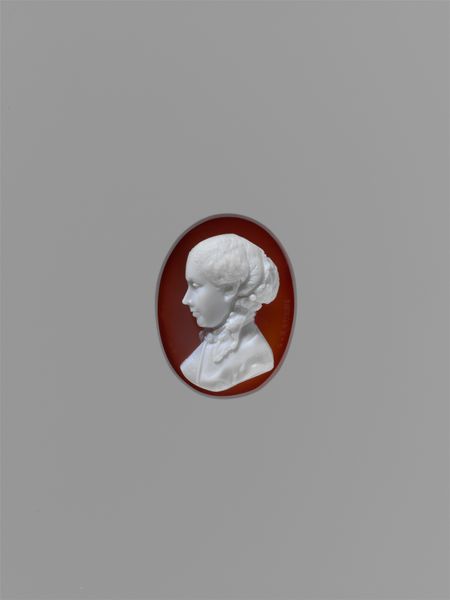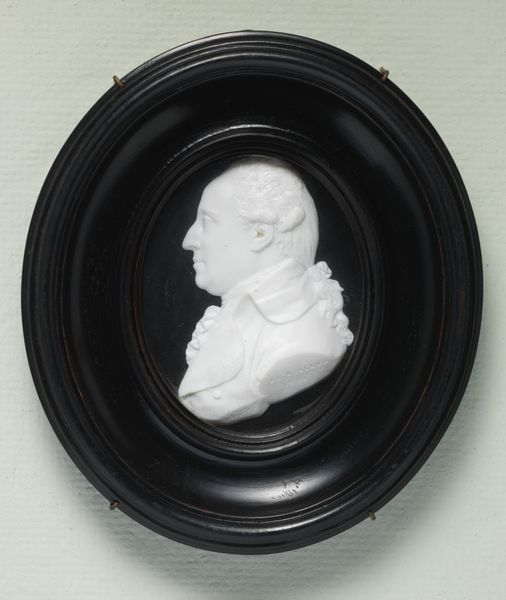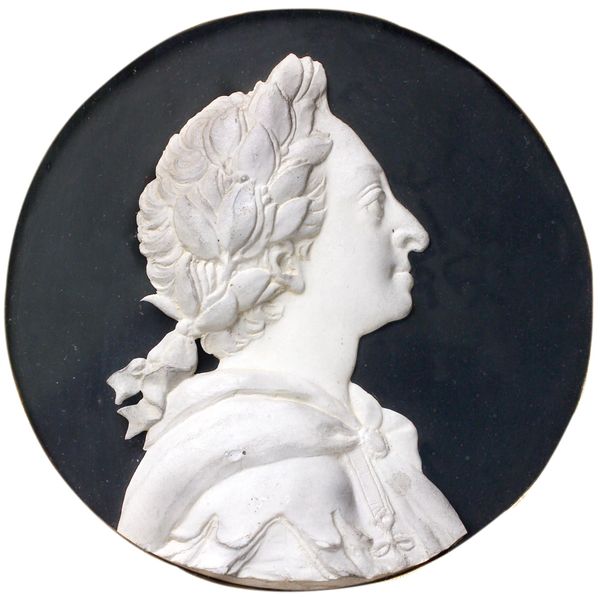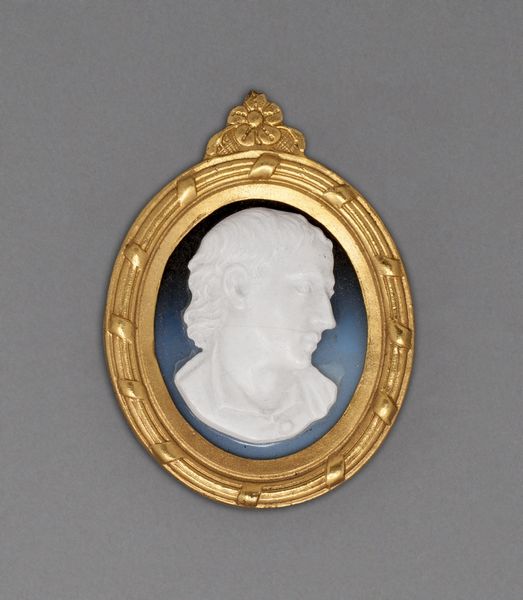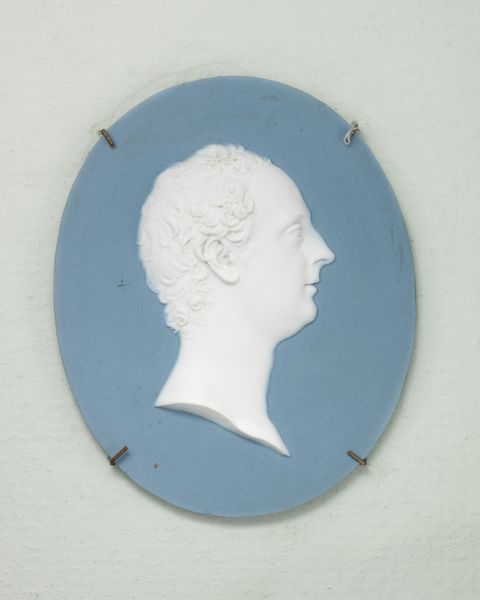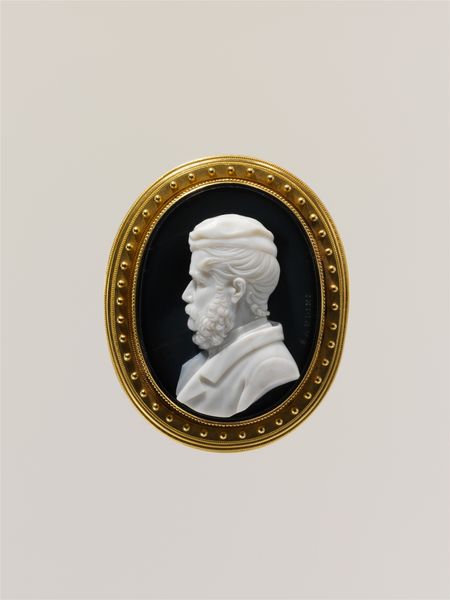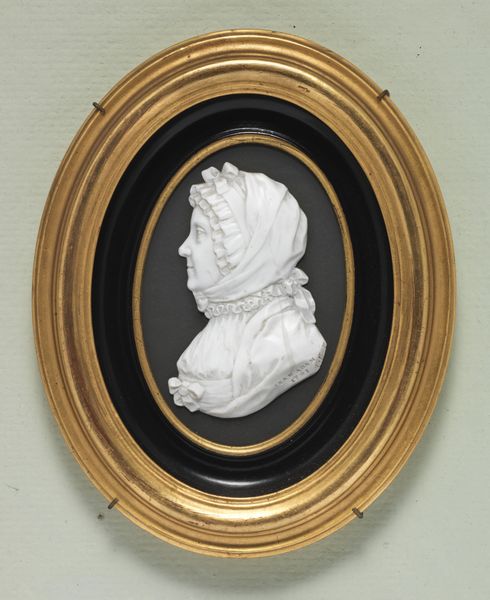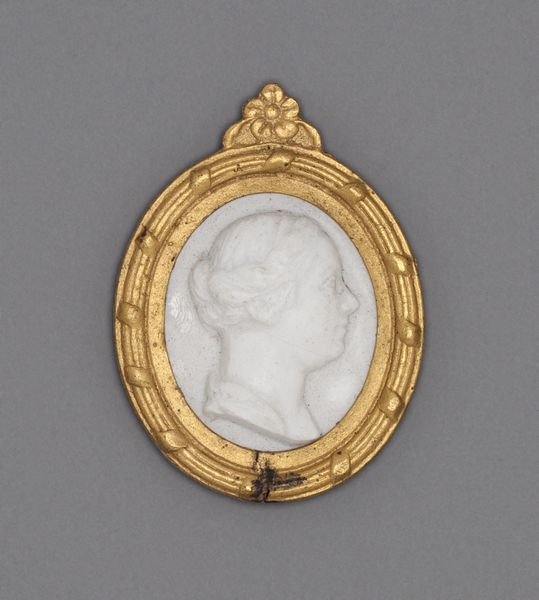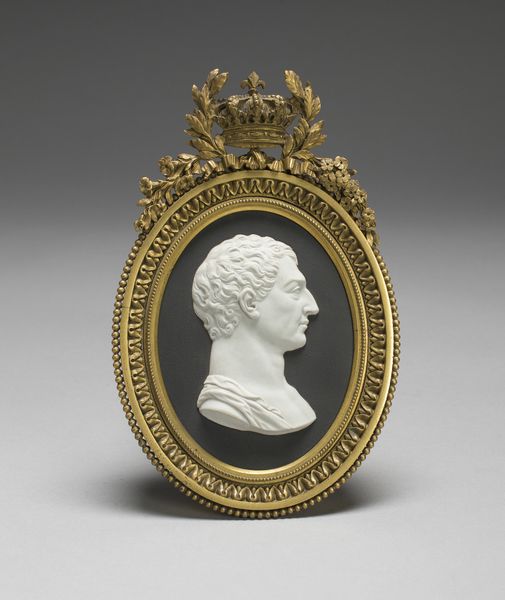
Dimensions: Overall (confirmed): 2 1/4 × 1 5/8 in. (5.7 × 4.1 cm)
Copyright: Public Domain
Curator: Isn't she fierce? Like a snowflake who knows jujitsu. Editor: Precisely! What strikes me about this late 19th-century sculpture, called "Bust of Minerva," is the classical poise melded with incredible detail, characteristic of the Neoclassical movement. This piece, held in the Metropolitan Museum of Art, is carefully carved in marble with an unidentified material for the dark green backing. Curator: Mmm, poise. And that cool green really lets the goddess pop. The marble work is extraordinary, really—you almost expect her to speak. I love how they’ve handled her helmet, particularly. It’s strong but not brutal. Editor: Indeed. Neoclassicism deliberately sought to emulate the ideals of ancient Greece and Rome, favoring order, reason, and idealized forms. We can see how Minerva, as a representation of wisdom and strategic warfare, becomes a vessel through which to channel conversations about power and femininity. Think about what Minerva means within patriarchal structures, which is why I question the idealization, the "perfection". Curator: Right, because, you can’t escape the cultural landscape it was born into, can you? It’s pretty fascinating that someone took the time to realize such detailed work and also still kind of mind-blowing the piece wasn't necessarily intended for "high art" purposes; its destiny may have very well been adorning some rich person’s desk. And not in a bad way. Like a touch of immortality, gazing at the endless paperwork... Editor: Absolutely! While the craftsmanship might be incredible, the intention becomes complex. How does something function as "decorative art" while invoking the mythology tied to war? We must recognize that the domestic and the political become entwined. Curator: You know, I see your point. The artist is kind of wrestling with the notion of power, gender, beauty, purpose... all through a small marble bust of an ancient deity. Beautiful chaos! Editor: Precisely, this piece of Minerva certainly provides fodder for reflecting on representation and historical power, or rather how a concept of historical power persists even in ornamental objects. Curator: Yes! The marble "Bust of Minerva" whispers a secret, doesn't it? History, beauty, and power tangled together like her marble curls.
Comments
No comments
Be the first to comment and join the conversation on the ultimate creative platform.
